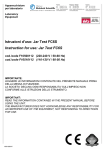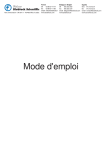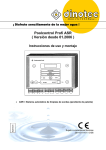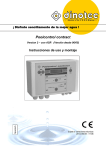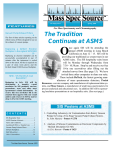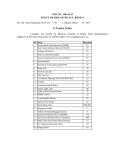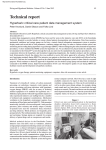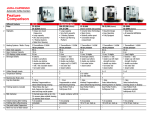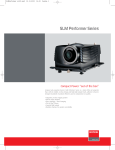Download B: Article TROUBLESHOOTING AT A BATH WITH HYDROGEN
Transcript
B: Article TROUBLESHOOTING DISINFECTANT AT A BATH WITH HYDROGEN PEROXIDE AS Víctor Martínez i Vila (e-mail: [email protected]) Abstract Typically swimming pools are disinfected with chlorine methods, those have demonstrated their worth regarding killing of pathogenic micro organisms. In Lund and Bjärnum pool, hydrogen peroxide in combination with Ultra Violet light is used replacing chlorine. It does not produce by-products and is eco-friendly. However, some problems, like a fat development, leading to increased costs and operational problems. In the given study this cited swimming pools are descript. Mostly Bjärnum pool is accurately characterised and evaluated according to data taken from the water system treatment, which indicated some anomalies mainly in the filtration system. To analyse that, a full-scale filter test was done; it consist in water analysis and pressure meter reading after and before the filtration. After back scavenging with fresh water the same filter test was done again to evaluate and compare it with the previous one. The filter test results indicate a low cleaning power and hydrogen peroxide consumption inside the filters. Because of that the hypothesis that diminute particles did not become flocks and came back to the pool took more force. Therefore, a flocculation Jar-test was done. Results with swimming pool water were not satisfactory so this hypothesis was ruled out because of no particles were present. Keywords Hydrogen peroxide, disinfectant, swimming pool, Jar-test 1. INTRODUCTION Many people usually go to public swimming pools to do recreational activities. They share a relatively small volume of water that has to maintain the sanitarian parameters stable all the time. Because of that the pool water treatment system has to be efficient and friendly for the environment and human health as well. Swimming pool water is usually polluted with different kinds of unwanted substances and microorganisms, which are carried by the bathers. There are many sources of contamination, such as bacteria from skin and saliva, pollution from swimwear, cosmetics, etc. These microorganisms, bacteria, virus and protozoa can cause some illnesses like diarrhoea or several infections.Is for these reasons that there is a high demand on disinfectants, because they both achieve to kill the microorganisms and remove the dissolved pollutants via oxidation. Almost all the swimming pools are treated with chlorine based disinfectants. The most common chlorine based disinfectants is sodium hypochlorite that has been demonstrated effectiveness; It kills bacteria by diffusion of hypohalous acid through the cell membrane (White, 1992; cited in R.Borgmann-Strahse, 2003) and its disinfection rate depends on: free available chlorine concentration, type of organism, contact time, pH and temperature. However, high chlorine doses can provoke some hurts because of the Free Active Chlorine (FAC) and Combined Active Chlorine (CAC) presence in the water. This kind of disinfectants forms some by-products, such as trihalomethanes, which along with chlorammines can irritate eyes and respiration tracks, and are also suspected carcinogenic. Thus, chlorine becomes dangerous for people who are exposed to these products for a long time, for instance the professional swimmers or the pool attendants, whose have been declared to suffer physical chronic problems as fatigue, headache, sore throat and eye irritations, all of them probably caused by the work conditions. Hydrogen peroxide is an alternative to chlorine disinfectants. It has a high oxidation power and it does not produce problematic by-products but it can build toxic compounds: singlet oxygen and hydroxyls radicals (Dieter, 1988; cited in R.Borgmann-Strahse, 2003). However, its disinfectant efficiency has to be still demonstrated. Hydrogen peroxide can enhance its disinfection properties in combination with other agents; with metallic catalysts like Ag becomes a potent drinking water disinfectant (R.Pedahzur et Al.,1997); with ozone or Ultra Violet light the oxidation power is enhanced from advanced oxidation processes (Idil Arslan, 2000). Besides, in chlorine treated pools hydrogen peroxide can also remove chlorine by-products like trihalomethanes and haloacetic acids; those are formed when chlorine is oxidised by the air or condensated on process systems (S.Batterman, 1999).From toxicological point of view hydrogen peroxide can provoke skin, eyes and respiratory track irritations in concentrations over 10 mg/m3 of air (ECETOC). For swimming pool applications it is usually distributed at concentrations of 35% of aquous solution. 1.1 Swedish swimming pool water requirements pH FAC (mg/l) CAC (mg/l) Total chlorine added (mg/l) COD (mg O2/l) Total bacterial count (cfu/ml) Pseudomona aeruginosa (cfu/ml) 6.8-7.8 < 0.4 (pH = 7.2) < 0.5 (pH = 7.4) < 0.6 (pH = 7.6) < 0.4 <2 <4 < 100 <1 Table 1. Pool water requierements (Socialstyrelsen SOSFS 2004:7 (M)) 1.2 Review of Bjärnum pool situation In Bjärnum big pool the water flow to be treated come in 80 % (v/v) from pool surface and 20 % (v/v) from pool bottom. Is in the water surface where some oil or fat can be seen. The water from pool surface are manually analysed instead of pool water in recirculation system that are automatically analysed. In this analyses pH, temperature and hydrogen peroxide concentration are measured. Three months of data are used to characterise how is the pool working related on pH and hydrogen peroxide measures. The first problem is that the information given to automatical machine and manual tests are quite different. According to the company, manual test are much more reliable so, the problem leads for the bad working of the automatical machine, which has to be more often calibrated due to the mal functioning of the electrode, might be caused for the fats. Moreover, it is also a problem that the hydrogen peroxide consumption depends on the automatically measurements, and it does not work as a proportional control system, which tries to avoid the peaks so far to the set point, which is in 88 ppm. Therefore, the hydrogen peroxide consumption varies dramatically, which represent an important costs increases as well as the possibility to achieve stabilize the hydrogen peroxide pool concentration and so, to optimize the disinfectant efficiency. Approximately once a week back scavenging with fresh water is made and once a month back washing filter with chlorine is made too; when that occur, the amounts of fresh water increase. However, the effects of these on the system cannot be evaluated with the data taken although it seems that back scavenging and chlorination help to maintain the system more stable. Bacterial analyses done every 15 days during these 3 months of data demonstrate that the pool water is correctly disinfected. Total bacterial count concentrations are about 10 cfu / ml, much lower than the limit, 100 cfu / ml. Pseudomonas Aeruginosa’s concentrations are also given and its concentration is on the correct value, which has to be below 1 cfu / 100 ml of water. 2. MATERIAL AND METHODS 2.1 Swimming pool water system treatment The swimming pools that has been experimented and evaluated are Skåne pools provided by International Marketing Sweden AB. Those have as a main characteristic that hydrogen peroxide along with Ultra Violet light is used as disinfectant. All of these have a recirculation system where the first stage is a balance tank to maintain the desirable level on the pool and control the flows through the pipes, filters and Ultra Violet chamber. After the balance tank, the pool water pass through a strainer, removing big particles like hair and lint, to be pumped to the filters. Both before and after the filtration, automatic measure machines can control the system in continuous; it usually controls both pH, temperature, disinfectant concentration on the pool water flow, and the amount of chemicals available in the can to provide the daily consume. After that, the water flow is pumped to the filters but, before it enters there a certain amount of coagulant is added, normally about 0.4 µl/l. The filtration process is made up of four or five filters in parallel. Each filter has one pipe inlet, one pipe outlet and one pipe that can work as an inlet or outlet in order to be able to do the pool water filtration and the filter back scavenging. In the filtration system the pool water enters into the filter about 2-3 m/s on the top of it, percolling through the filter at 15-20 m/h in contact to three kinds of sand or gravel where the particle diameters are from 0,4 to 5 millimeters; then the cleaner water go out to the back of the filter to be disinfected. When the filters have to be cleaned, the fresh water cross the filters at 45-60 m/h in a back scavenging process. With more pressure the water achieve to drag the wastes from the sand until the top of the filter, where there is an outlet pipe. In this process the water pass trough the filters many times before being removed and before the normal water filtration can work. Sometimes back scavenging is made with a chlorine solution in order to remove the wastes better. The disinfection system may be the last operation in the water treatment system. It is made up of a low pressure Ultra Violet light chamber (wavelength of light < 300 nm) in combination with the strong oxidiser, hydrogen peroxide, to generate very reactive radicals OH- and then kill bacteria as quickly as possible according to the system water flow. Thus, the needed amount of hydrogen peroxide is injected depending on its concentration in the pool. Figure 1. Bjärnum swimming pool water treatment system flow sheet Due to its mainly importance in this study, Bjärnum flow sheet is represented (Figure1) as an example of water system treatment. However, Bjärnum and Lund swimming pools have similar system treatment so, similar flow sheet. The main differences between these are that in Lund the treated flow is about 44 m3/h instead of 80 m3/h, no Oxa H2O2 is added, there are 5 filters instead of 4 and pH is regulated after filtration. 2.2 Carried out tests 2.2.1 Filter test Filter tests are done full-scale in Bjärnum system treatment. In these tests hydrogen peroxide concentration and pressure are controlled before and after the filter. Results are obtained in situ. Hydrogen peroxide concentration is obtained in a spectrophotometer using water samples with a chemical. Filter pressure values are taken in the filter pressure meter. These tests are carried out twice, the first when the normal water recirculating takes place and the second one after back scavenging. In both tests water samples and pressure values are taken from each filter, before and after the filtration took place. 2.2.2 Jar-test In this method a floculator machine is used in the lab. It permits to mix the water regulating the stirring intensity in rpm and in two independent phases, the coagulation or fast phase and the flocculation or slow phase. In each two phases their stirring time is also selected as well as the sedimentation time. Another matherials and products used in Jar-test are: pool water, three kinds of coaguland, micropipette available range from 0,5 to 10 microliters, pH meter, thermometer, sodium carbonate and hydrochloric acid 0,1 M. At the beginning of the test 1000 ml of pool water is put in a baker; this water is collected from the Bjärnum pool or from the Lund recirculation system. Then, the baker is immersed in a water bath to reach 25ºC. The desirable alkalinity is adjusted with sodium carbonate; three alkalinity levels are tested: the natural pool water alkalinity (0.5ºdH), 5 ºdH and 10ºdH. After that the pH has to be adjusted with hydrochloric acid solution to reach a pH range of 6.8 – 7.8, optimal for the coagulation and inside Swedish water requirements. Subsequently, the flocculator is turned on with the desirable condition test, and 0.5 microliters of one of three coagulants is added. This coagulants are polyaluminium chloride (Sachtoclar and Dinofloc) and sodium aluminate (Optofloc), all of these used by International Marketing AB in Lund and Bjärnum. Each of these solutions are tested in two different conditions, varying the turbulence and reaction time in each phase. The first condition tries to simulate the real situation in the pool water system treatment although it is impossible, because the turbulence in the first section of the pipe is twice than the flocculator capacity (400 rpm). Therefore, the coagulant is added in the coagulant phase with the highest floculator turbulence (400 rpm) during 15 seconds, followed by a short slow phase of 1 minute to 50 rpm. The second one tries to reproduce the ideal flocculation according to the found literature, adding the coagulant with a high turbulence (200 rpm) during 3 minutes in the coagulant phase, followed by the flocculant phase where reducing the stirring intensity to 50 rpm during 7 minutes the particles join together and form aggregates. After that, wait about 20 minutes to let flock precipitation. The results are obtained firstly showing the amounts of precipitate. If some precipitate has been obtained turbidity measures can be done to evaluate quantitatively the coagulation-floculation reaction. Finally, in case to obtain good turbidity results, COD measures can be carried out to evaluate the organic mater removal due to suspended solids. 2.3 Analysis Samples for analysis were taken from different kinds of water: pool water, recirculating pool water and water from experiments carried out in the laboratory. Nitrate was determined using the Dr. Lange method LCK 339, Ammonium using the Dr. Lange method LCK 303, Phosphate using the Dr. Lange method LCK 349 and COD concentration using the Dr. Lange method LCK 114. Alkalinity was determined through SS-EN ISO 9963-1. pH was determined with an hydrogen selective electrode and turbidity using a turbidimeter. 3. RESULTS AND DISCUSSION 3.1 Filter tests Filters tests have been done in Bjärnum pool system treatment, in order to evaluate how they work and thus find a technically feasible way of solving the problem. Firstly some water parameters taken before and after the filtration system are analysed in the lab as it is shown in Table 2. In Table 2, the strange filter functioning can be deduced. Although nitrogen-based compounds and phosphorous concentration values do not follow a bad progress in the filtration, pH value are too low and COD suffers an unusual enhance. COD increases its value in 40 % in the filter, therefore the water comes back to the pool dirtier than when it is recirculated to the water treatment system. It seems clear that something does not work well in the filtration system, it could be because of a flocculant or disinfectant problem. Is for this reason that a full-scale filter test have been done. Parameter analysed pH Nitrat - N Sample 1 Sample 2 6.7 1.01 mg.L-1 6.6 1.01 mg.L-1 Ammonium - N 1.34 mg.L-1 1.38 mg.L-1 Phosphate - P Alkalinity COD 0.15 mg.L-1 0.5 ºdH 53 mg.L-1 0.12 mg.L-1 0.5 ºdH 74 mg.L-1 Turbidity 0.1 NTU 0.1 NTU Table 2. Bjärnum water filter test (08/03/06). Sample 1 is from water taken before the filter and Sample 2 is from water taken after the filter. Water Temperature = 16 ºC In these filter tests hydrogen peroxide concentration and filter pressure was specially controlled, both before and after the filter, in order to evaluate the flocculation and hydrogen peroxide consumption inside this. Moreover, sand filters were changed three weeks ago, when its working live is about 10 year according to the suppliers. Results of filter test during normal water circulation through the system treatment are shown in Figure 2 and 3. before filter before filter after filter after filter 120 1,6 110 100 1,4 1,2 1,2 1,2 90 1,1 80 1 0,8 0,8 0,8 0,7 0,8 0,6 HP (ppm) Pressure (bar) 1,2 74 73 82 78 71 64 70 79 68 60 50 40 0,4 30 20 0,2 10 0 4 3 2 filter 1 0 4 3 2 1 filter Figure 2. Manual pressure filter test Figure 3. Manual filter test during normal during normal circulation (Bjärnum circulation to evaluate the hydrogen peroxide big pool 13/04/06) consumption (Bjärnum big pool 13/04/06) In Bjärnum pool system treatment the pump usually works at 1.6 bar but, due to pressure loss the water usually enters to the filters at 1 bar. When the dirt goes increasing in the filters, the pressure in the top enhances while in the bottom it decreases. Pressure differences about 0.5 bar before and after the filtration means that back scavenging must be realized. That is due to good flocculation or good dirt retention in the filter. As is shown in Figure 2 pressure difference is lower than 0.5 in three to four filters so, it could be because of a flocculation problem. In Figure 3, hydrogen peroxide consumption is shown. This consumption is only significant in filter number 3, the same one that presented pressure difference of 0.5 and the huge amounts of dirt inside. Therefore, that could mean that the hydrogen peroxide with its hydroxyl ions were consumed by the coagulants or by the organic matter. After back scavenging the pressure is 0,9 bar in all the filters and also before and after each filter; it means that the filter is cleaned correctly. In this filter test hydrogen peroxide concentration is a little bit higher. However, hydrogen peroxide consumption is similar than before back scavenging, maybe because it more difficult to remove some pollutants if they are mixed with the sand or dissolved in water. Another possibility of hydrogen peroxide consumption is due to the reaction with coagulation chemicals that are positively charged. As is shown in Table 2 the recirculating water suffers a COD enhance when it cross the filters but the turbidity is always very low, about 0.1. Therefore, COD can be due to the dissolved organic matter and its enhance because of the contact with the dirtiness into the filter, which could provoke an increase of hydrogen peroxide consumption. 3.2 Flocculation tests Flocculation tests are performed through Jar-test method to check and improve the coagulationflocculation efficiency, as well as to confirm the hypothesis that reaching bigger flocks is possible to avoid that small colloids mixed with coagulant come back to the pool becoming fats. In swimming pool water, the presence of suspended solids makes up an important contamination. The size of this kind of particles can be really variable and many times visually imperceptible although they can cause the water turbidity. The efficiency of Coagulation-Flocculation process depends principally on the water characteristics, the kind and dose of coagulant, the reaction time, the turbulence, the pH, the alkalinity, the temperature and the equipment where the mentioned process is done. During the Jar-tests some of these parameters were changed to determine the effect of each one. The water used in these Parameter analysed Value experiments was collected from pH 6.42 Bjärnum pool surface. Its physicoNitrat - N 4.83 mg.L-1 chemical characteristics are shown Ammonium - N 0.118 mg.L-1 in Table 3. Only using Dinofloc as Ortho phosphate - P 0.142 mg.L-1 a coagulant the water was from Alkalinity 0.49 ºdH Lund recirculation system to check COD 60 mg.L-1 whereas the results were different. Turbidity 0.1 NTU According to Table 3, pH is lower than the minimum required, 6.8, Table 3. Bjärnum swimming pool water analysis results and it is able to affect negatively to coagulation efficiency. The alkalinity value is also lower than the minimum recommended for the suppliers, 5ºdH. COD represents theoretically the dissolved organic matter due to the insignificant turbidity value. Depending on the results some tests have been dismissed because no new information was given. The experiment strategy is based on evaluating the efficiency of the coagulation-flocculation process as well as the effect of each parameter in this process. For instance, the test without coagulant is only done with high alkalinity level in order to demonstrate if there is still some active coagulant particle in pool water capable to form any flock with this alkalinity level; as this experiment is not successful it is ruled out to do another one without coagulant addition. In case of experiments realized with each coagulant, the effect of alkalinity must be tested firstly with natural level, 0.5ºdH; if it is not successful, tests with high alkalinity level is done to compare with the real one. All the experiments have been carried out with both reaction conditions in order to evaluate the pool flocculation system conditions in front of the supposed ideal ones. Jar-tests with different swimming pool waters have been done and no flocks have been observed. Then, it has been impossible to evaluate the effect of the kind of coagulant, the alkalinity and the test conditions in the coagulation-flocculation process. However, some small flocks and turbidity reductions about 70% have been obtained using lake water. This result confirms the coagulants efficiency and obliged to take into account other possible causes those the experiment in the lab with pool water has not work as it was expected. Maybe it is really difficult to obtain some flocks with water of very low turbidity (≈ 0.1 NTU) and also with a laboratory equipment that do not permit to reproduce the coagulation-flocculation process of the pool system treatment. About that, note that the turbulence is much higher in the pool system treatment than in the lab equipment so, the small coagulant doses added in the water can be put in contact much easier with the pollutants that theoretically exist, increasing its efficiency. However, the reaction time in the pool system is very short and could be insufficient to the good flocks formation. Besides, the scale problem has to be considered, because to obtain flocks from 1 liter of relatively clean water can be difficult, when too much flocks are not obtained in the filters after 7400000 liters of pool water with coagulant pass through them every week (note that Back Scavenging is done approximately every week). Thus, with turbidities about 0.1 NTU it is easy to think that the COD in the water is due to dissolved organic matter, which only can be removed by the disinfectant, in this case hydrogen peroxide. However, according to the bacterial analysis, hydrogen peroxide in combination with UV light is a good biocide. Thus, it would not be a good idea to rule out the possibility that fats can be diminute flocks (coagulant-pollutant blend) or just coagulant that can cross through the filters coming back to the pool. 4. CONCLUSIONS Automatical H2O2 machine control has to be more often calibrated in Bjärnum pool to reduce the hydrogen peroxide consumption and so, the costs. Automatical pH machine control has to be more often calibrated in Bjärnum pool to avoid getting values out the limits, which are imposed by the water requirements or by some specification from some part of the pool water system treatment. COD level in Bjärnum filters suffers an unusual enhance of 40 %, then this water comes back to the pool dirtier than when it is recirculated to the water treatment system. Pressure in Bjärnum filters does not increase as it should: the mainly filters do not reach the pressure difference of 0.5 bar so, the filtration efficiency is lower than the desirable. H2O2 consumption increases when pressure difference is higher so, more flocks, organic matter or pollutants are inside the filters. After back scavenging with fresh water the pressure difference disappears but H2O2 consumption is maintained. In flocculation Jar-test performed no flocks was obtained so, it was impossible to improve the flocculation process efficiency. However, the coagulants and Jar-test efficiency was confirmed with lake water. Pool water turbidity is so low, about 0.1 NTU, that permits to think that the COD in the water is due to dissolved organic matter, which only can be removed by the oxidant, in this case H2O2 that according to external bacterioligical analysis presented, it works as a good biocide. Then, fats can be formed because of coagulant that has not reacted with any colloid. REFERENCES Renate Borgmann-Strahsen, “ Comparative assessment of different biocides in swimmng pool water”, Int. Biodeterioration & Biodegradation 51 (2003) 291-297. R.Pedahzur,H.I.Shuval and S.Ulitzur, “Silver and Hydrogen peroxide as potential drinking water disinfectants: their bactericidal effects and possible modes of action”, Wat. Sci. Tech. Vol.35, No.1112, pp.87-93, 1997. Idil Arslan, Isil Akmehmed Balcioglu, Tuula Tuhkanen and Detlef Bahnemann, “H2O2/UV-C and Fe2+/H2O2/UV-C versus TiO2/UV-A Treatment for reactive dye wastewater”, Journal of Environmental Engineering (2000) 903. S.Batterman, L.Zhang and S.Wang, “Quenching of chlorination disinfection by-product formation in drinking water by hydrogen peroxide”, Wat.Res.Vol.34, No.5, pp. 1652-1658 (2000). ECETOC - European Center of Ecotoxicology and Toxicology of Chemicals, Special Report No. 10, Hydrogen Peroxide OEL Criteria Document, ECETOC, Brussels (1996). Socialstyrelsen Bassängbad SOSFS 2004:7 (M). Swedish swimming pool water requirements








